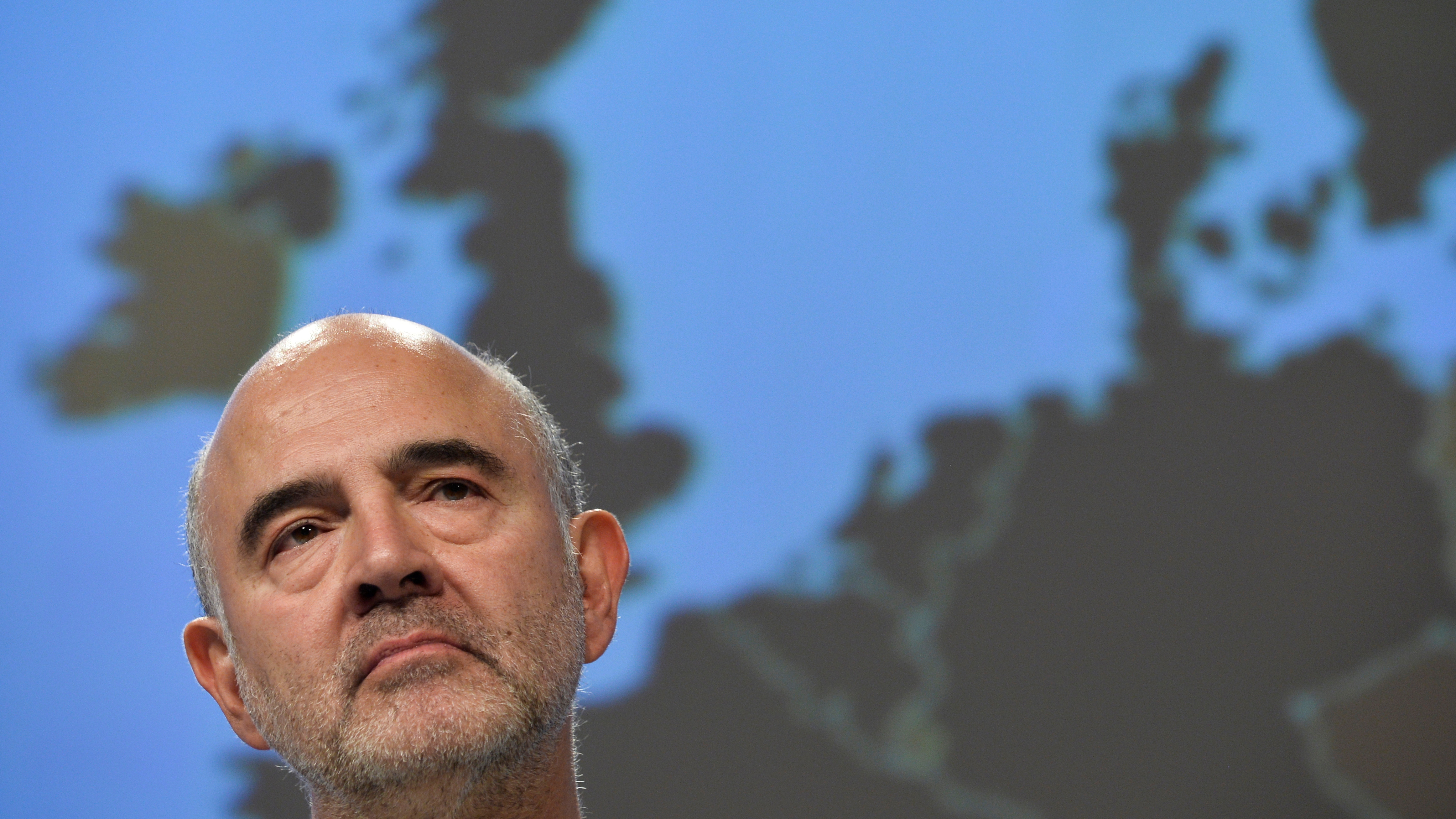
Pierre Moscovici, the European commissioner for economic and financial affairs, presented the EU autumn economic forecasts in Brussels (Credit: Reuters)
Pierre Moscovici, the European commissioner for economic and financial affairs, presented the EU autumn economic forecasts in Brussels (Credit: Reuters)
The European Commission has trimmed its eurozone growth forecasts in its autumn budget, citing Brexit, global trade disputes, and geopolitical tensions.
Presenting the report from Brussels on Thursday, the Commission cut its growth forecasts from the 1.2 percent expected in July for countries in the eurozone to 1.1 percent, with projections of 1.4 percent in 2020 and 2021 falling to 1.2 percent.
"Economic growth has continued, job creation has been robust and domestic demand strong. However, we could be facing troubled waters ahead: A period of high uncertainty related to trade conflicts, rising geopolitical tensions, persistent weakness in the manufacturing sector and Brexit," said Commission Vice President for the euro Valdis Dombrovskis during a presentation of the autumn forecast in Brussels.
"I urge all EU countries with high levels of public debt to pursue prudent fiscal policies and put their debt levels on a downward path. On the other hand, those member states that have fiscal space should use it now," he added.
The eurozone's aggregate budget deficit is now forecast to rise from 0.5 percent of GDP in 2018 to 0.8 percent in 2019, 0.9 percent in 2020 and 1.0 percent in 2021, unless there are policy changes.
Germany and the Netherlands, the two eurozone countries considered to have fiscal space, are under pressure to provide higher fiscal stimulus, with both states having had low public debt and running big budget surpluses for several years.
The Commission sees the Netherlands as having a GDP budget surplus of 1.5 percent in 2019 and 0.5 percent next year. Germany is forecast to have a surplus of 1.2 percent this year and 0.6 percent next year, and is forecast to retain the surplus until at least 2021.
The eurozone's aggregate public debt-to-GDP ratio will continue to decrease after five consecutive years of decline, dropping to 86.4 percent this year, 85.1 percent in 2020 and 84.1 percent in 2021.
While the European Central Bank has a target of keeping eurozone inflation just below 2 percent over the medium term, Commission forecasts place it at 1.2 percent this year and 1.3 percent in 2021.
"Inflation ... slowed so far this year due to the fall in energy prices and because firms have largely chosen to absorb the cost of higher wages in their margins rather than pass them on to customers," the Commission said.
"Inflationary pressures are expected to remain muted over the next two years," it added.
Source(s): Reuters